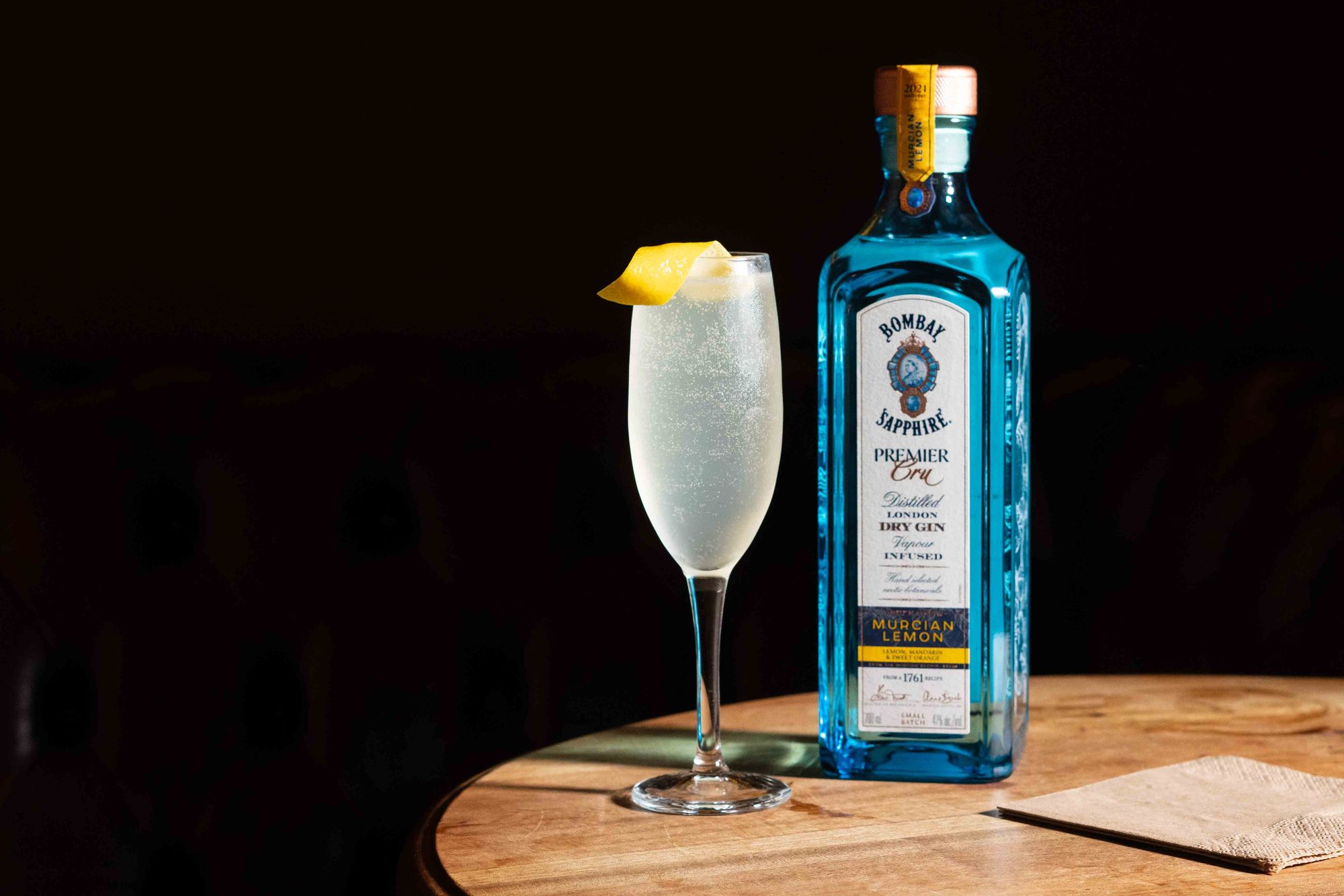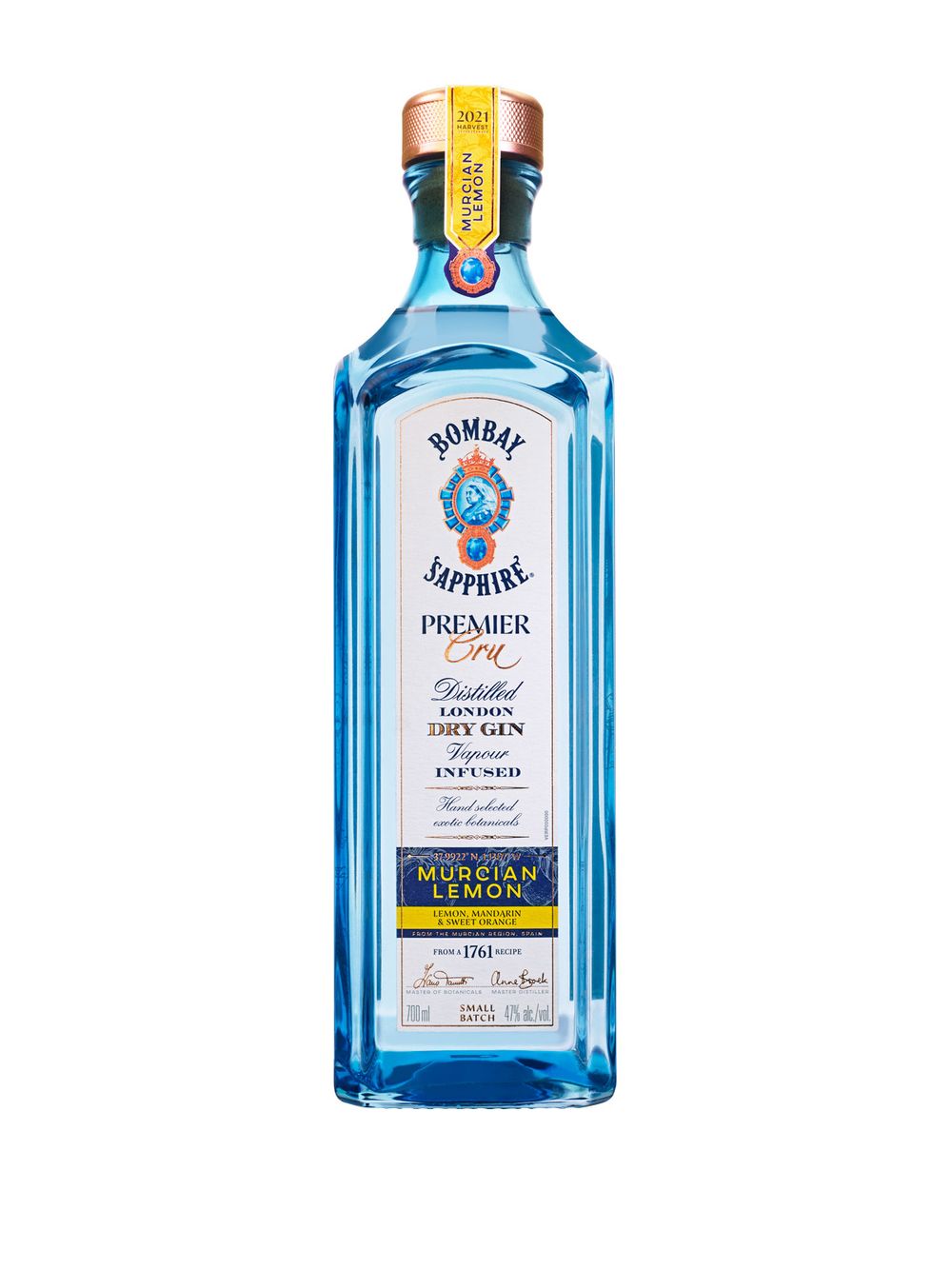The French 75 cocktail asks two crucial questions
Though there are many incarnations of the French 75 cocktail, only two decisions really matter.

PRESENTED BY BOOTHBY IN PARTNERSHIP WITH BOMBAY SAPPHIRE PREMIER CRU
The French 75 is an example of the power of a great moniker, and why bartenders have continued to name their cocktails for puns and matters of the day down through the ages. But it has had many incarnations over the years, and plenty of folklore surrounds it — so what do you really need to know?
Perhaps originally known as the Soixante-Quinze, or Seventy-Five, the drink variously contained calvados, applejack, grenadine, lemon juice, or even absinthe — the one common ingredient to the various recipes of the time being gin.
The accepted wisdom — inasmuch as these things can be accepted — is that the drink was named for a piece of quick-firing piece of French artillery around the time of world war one, which for any drinker of the era was likely all the reason they needed to order a French 75: like its namesake, it was guaranteed to give a wallop.
What’s important to know is that the drink as we understand it today — gin, sugar, and lemon, topped with the effervescence of champagne — first appears in print in 1927 in a recipe book titled Here’s How! by Judge Jr., and was replicated holus bolus in 1930’s The Savoy Cocktail Book, home to many a classic cocktail.
How to make the French 75 cocktail
There are a couple of choices you’ll need to make when preparing a French 75 cocktail.
First up: the base spirit. Ask any bartender worth their jigger and tin and they’ll likely tell you the French 75 can be made with either gin or cognac. When cognac came into the mix, we don’t know, and frankly, a cognac-based French 75 has only ever been underwhelming. The earliest iterations specified gin as the base spirit, The Savoy Cocktail Book’s version called for gin — you want to make yours with gin, too.
The next choice to make here is about the vessel you’d like to carry the French 75, a drink which Harry Craddock wrote “hits with precision.” Today, you’ll most often find the French 75 strained and served up in a Champagne flute glass, but in both Judge Jr.’s book and The Savoy Cocktail Book, the recipe calls for the drink to be shaken and strained over ice in a tall glass.
Served long this way, you’ll notice the similarity between the French 75 cocktail and a Tom Collins (gin, sugar, lemon, and topped with soda).
It’s also a handy reminder that someone, somewhere before world war one, most likely had cause to substitute champagne for soda in their Collins, and that most cocktail origin stories are just that at the end of the day: stories.

French 75 cocktail
Ingredients
- 35ml Bombay Sapphire Premier Cru
- 15ml lemon juice
- 2 teaspoons fine sugar
- Champagne to top
Instructions
- Add the lemon juice and the sugar to a shaker.
- Mix well together with a bar spoon.
- Add 35ml Bombay Sapphire Premier Cru to the shaker.
- Add ice, and shake to combine ingredients.
- Strain into a chilled champagne flute.
- Top with champagne.
- Garnish with a lemon twist.

Bombay Sapphire Premier Cru Murcian Lemon celebrates the beautiful Spanish region of Murcia, where the lemon peel found in the signature Bombay Sapphire gin originates from. Held at a higher ABV of 47%, Bombay Sapphire Premier Cru is bold and bright while remaining remarkably smooth and refined. With a complex yet balanced flavour profile providing a unique citrus foundation for a variety of creative cocktails, Bombay Sapphire Premier Cru is the perfect gin to transform any occasion into something truly special.

